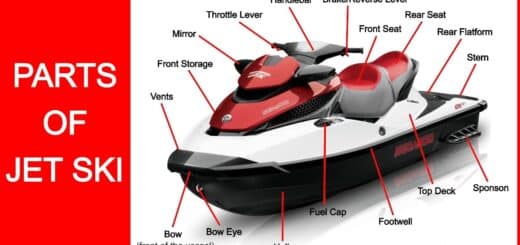15 Types of Boats – Essential Boat Safety Tips [with Pictures & Names]
![15 Types of Boats - Essential Boat Safety Tips [with Pictures & Names]](https://engineeringlearn.com/wp-content/uploads/2022/07/Boats-1-1024x539.jpg)
Introduction
Types of Boats – Essential Boat Safety Tips [with Pictures & Names]: – Whether you are a water sports fan or casually glancing around to purchase a boat but don’t have the foggiest idea about the kind that suits your necessities best, then, at that point, you have come to the perfect location. What could be more idyllic than a lazy summer afternoon on the water the wind in your hair, finish it off with a touch of fishing, swimming, or even water skiing, and it makes for incredible times with family and friends. ( Types of Ships )
Different Types of Boats
Since its invention and development, the boat has been an indispensable type of inland waterways and nearshore navigation. In spite of the fact that it is generally mixed up, there is a genuine distinction between a boat and a ship, fundamentally in their size, activity regions, an required group for activity, and cargo capacity. Throughout Its existence, the idea has remained steady, despite the fact that the design has shifted relying upon the real utilization of the boat, for example, traveler transport boats, cargo transport boats, sporting, and relaxation boats, and even speed dashing superior execution boat.
There are a lot of boat types with an enormous number of designs and sub-classes, and below we classify some of the boats as mentioned below: –
1. Canoes Boats: ( Types of Boats )

The Canoe is essentially a long and narrow boat that utilization’s oars to move. The individual, or people, driving the boat are confronting the direction of movement utilizing single-bladed oars while one or the other sitting or stooping on the lower part of the boat. Most canoes are an open-top type, and their body is made from fiberglass, shaped plastic, or aluminum to have a lightweight body, yet in the past times, most canoes were put together with wood or wooden frames enclosed. by material that had a far bigger weight.
2. Kayaks Boats: ( Types of Boats )
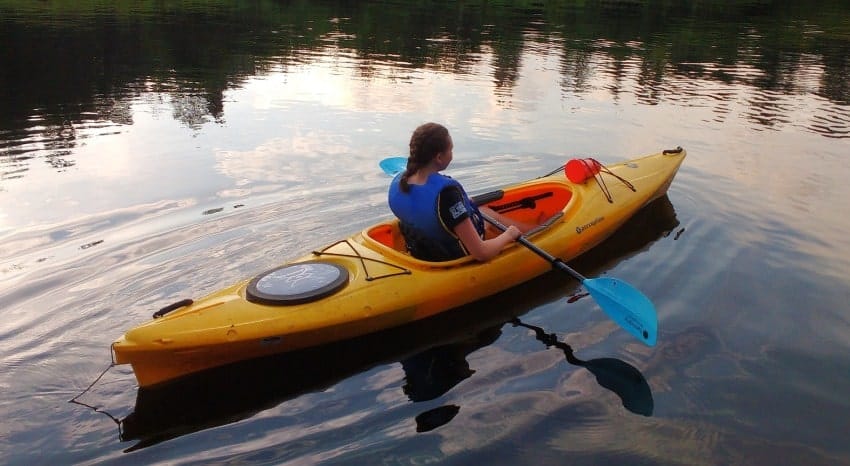
Kayaks are canoe-like boats that are smaller than a genuine canoe and typically are made from similar materials. One of the key distinctions is that the kayak can fit just a single individual, who is continuously sitting down, and the other difference is the closed-top, and that implies the legs of the individual sitting are covered, or to be exact, inside the body of the kayak. This is a direct result of the principal utilization of kayaks, which is whitewater kayaking, and the closed body assumes a major part in not letting water inside the boat and keeping the individual as dry as possible. Kayaks can likewise be utilized for fishing, ecotourism visits, and in any event, jumping and their design is reliant upon their aim or purpose.
3. Dinghy Boats: ( Types of Boats )
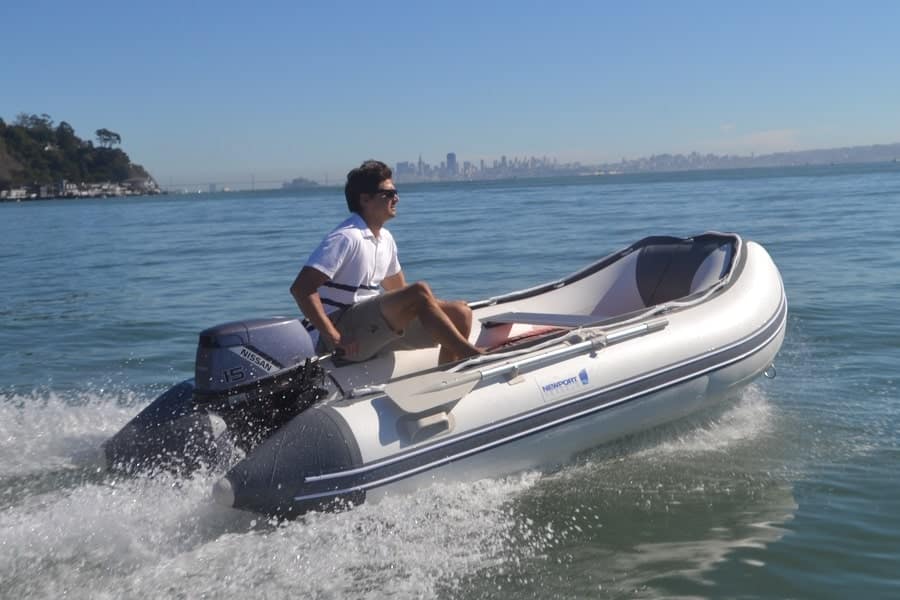
Dinghy boats are a sort of boat that is generally utilized as helpers to larger boats and ships to explore through tight water areas or as transport vessels for larger boats docked near the shore. They have a level base that permits them to move uninhibitedly in shallow waters without the risk of stalling out.
These boats are otherwise called rowboats (since they depend on oars and paddling for movement), yet some are a smidgen further developed and can be equipped with detachable engines, and some even have small sails, albeit those types are exceptionally rare.
Along with the most widely recognized type is inflatable boats; in any case, these boats can be made using aluminum, fiberglass, or marine compressed wood. In view of their little size, lightweight body, and reasonable costs, sporting clients are frequently attracted to this sort of boat for fulfilling their necessities, frequently fishing, investigating, setting up camp and exploration endeavors, and much more.
4. Fishing Boats: ( Types of Boats )
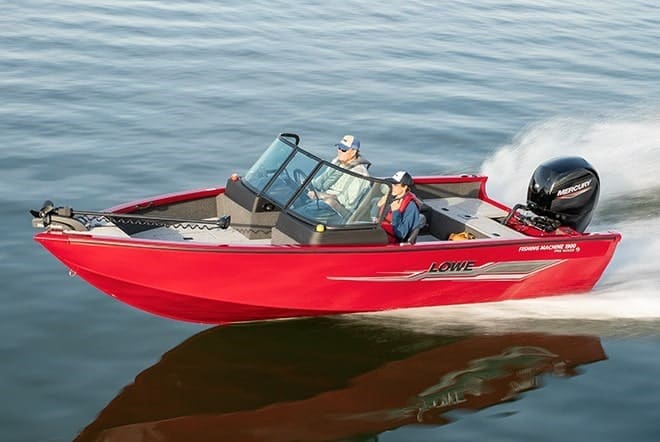
Since there are many kinds of fishing boats well defined for a certain catch, the boat design and configuration shift to fulfill the need of the fisherman. Since fish can be found in every kind of stream or area, the body of the fishing boat goes from a flat body utilized for shallow, inland waterways, the entire way to seaward fishing boats that have a more significant body and are taller so they can endure the harsh circumstances present in open waters.
The principle includes each fishing boat should have is rod lockers used to position the fishing poles while the fisherman enjoys their time. Other than this feature many fishing boats have a front bow and wide platforms that permit movement while having a fish on the hook. One more extraordinary part of fishing boats are having a trolling engine framework, generally electric, that moves the boat very slowly and unobtrusively through the water without scaring any fish in the area.
5. Rescue Boats: ( Types of Boats )

Rescue boats are the sort of boats that come as a rescue in time of scarcity and crisis, and in view of that crucial role in keeping the safety of the boating community, they gain an appreciation and decent mention in this rundown.
They are small vessels normally attached or on board greater vessels to carry travelers to somewhere safe on the off chance that a risky circumstance happens. In any case, they can likewise be individual vessels that operate in nearshore conditions. All of them are furnished with medical aid kits and life jackets and carry some food and water supplies to be prepared for a wide kinds of disaster.
In the event that a disaster occurs, passengers can rapidly enter the lifeboat, which is promptly brought down or pushed into the water to save valuable time in these sorts of circumstances.
6. Center Console Boats: ( Types of Boats )
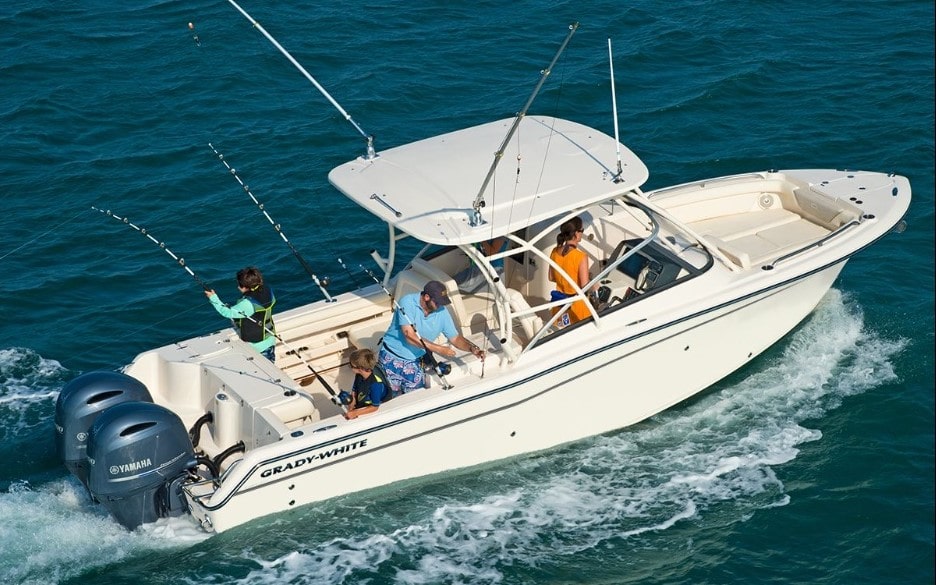
The name of these types of boats comes from the position of the steering console, which comes in the center of the boat. In light of this position and the boat’s deeply V-shaped structure, mid-console boats have a lot of space for movement and seating, making them great boats for day cruising and suitable for sport fishing while at the same time giving a smooth ride on offshore waters and a few additional giant waves.
7. Skiff Boats: ( Types of Boats )

Skiff boats, or short skiffs, are the end-of-the-week fisherman’s top choice with regards to modest and portable boats. Skiffs have a small body made of aluminum with a level base and a small to fair-sized motor ideal for nearshore fishing. In light of their size, they can be easily moved end or even put away inside, which is the reason they are the top choice for an entry-level inshore fishing boat.
8. Hovercrafts: ( Types of Boats )
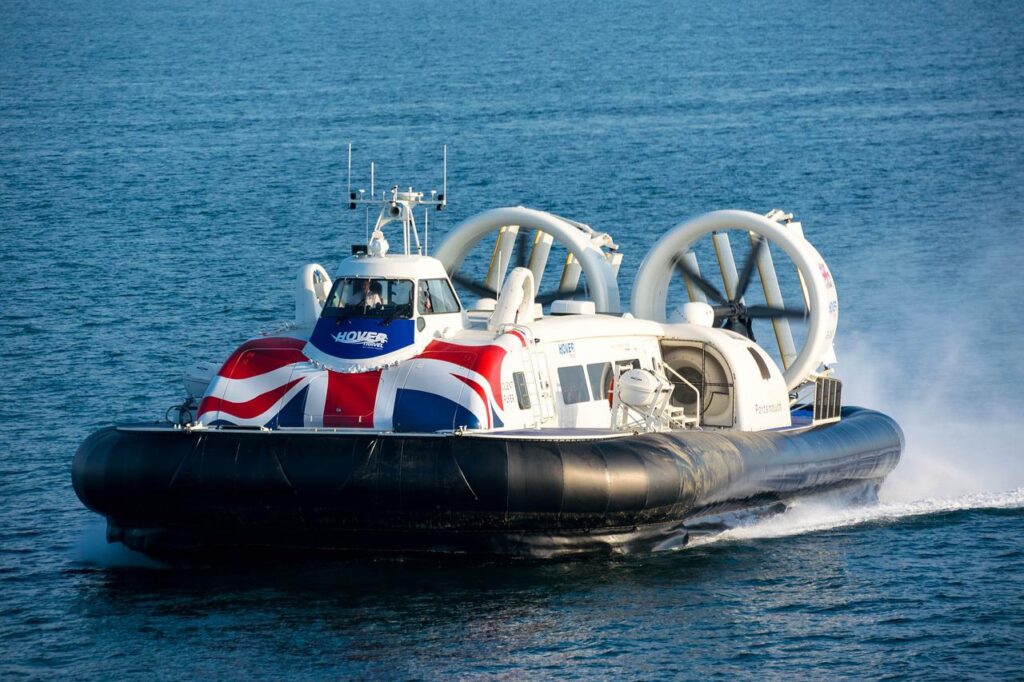
Hovercrafts are iconic fishing vessels that are especially nourished in most parts of the world. They highlight a flat aluminum body and a colossal and incredibly uproarious engine with an air propeller matching its look.
The driver sits on a seat that is higher than the other seating plans to have better visibility or perceivability. The hovercraft is utilized for fishing and crocodile hunting in view of its ability to move through shallow waters and marshes. In any case, primarily they are utilized as engaging boats since they are fast and fun, and they can give a completely exhilarating ride most wouldn’t forget.
9. Deck Boats: ( Types of Boats )

A smooth, modern design with a reasonably big seating limit and, obviously, an open deck region makes this type of boat ideal for engaging in a little gathering and enjoying on a sunny day on the water.
With a frame that is quite often V-shaped, typically around 30 ft. long, and a stern power drive make deck boats popular among sporting users that find delight in activities like swimming, water sports, and social occasions on the water.
10. Bowrider Boats: ( Types of Boats )
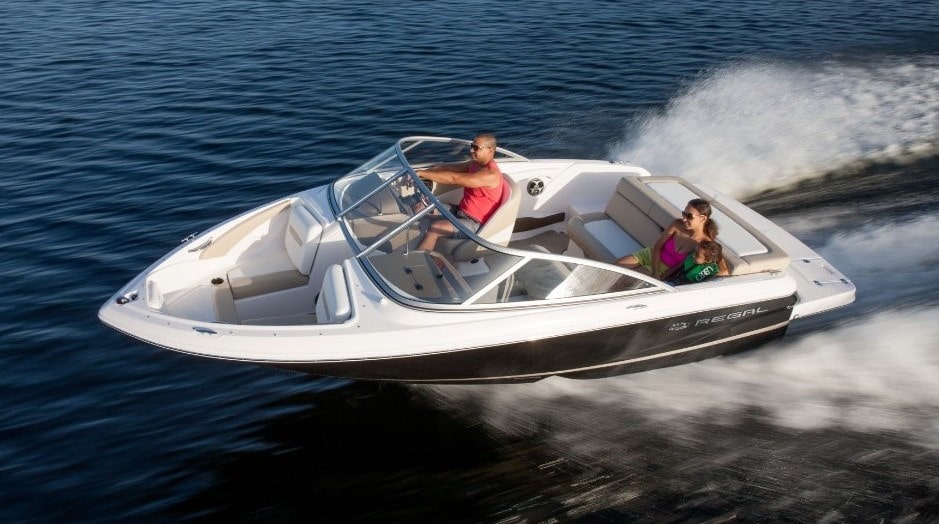
They are viewed as the most famous kind of powerboat among families. With their broad open space bow area, Bowrider boats offer seating space for eight or significantly more individuals. With the assistance of a stern drive or detachable engines, the V-formed structure gives a smooth ride across practically any kind of water condition. Essentially every one of them contains a swim platform for a wide range of sporting swimming exercises and relaxed boating experiences.
11. Yachts: ( Types of Boats )
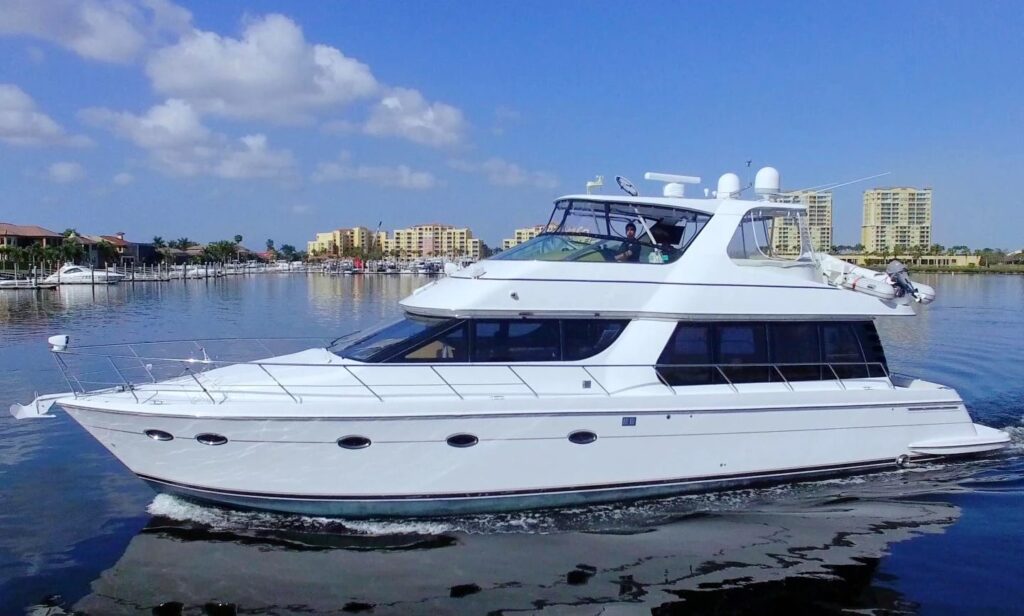
The most luxurious and modern design of boats. Motor yachts are the ideal boats for any vacation, from day cruising to a multi-day, long-range journey. All yachts are furnished with best-in-class navigational frameworks and radars to guarantee safe travel, whether it is nearshore or open water conditions. A portion of the sumptuous extra features that make them stand apart from the other boats is discretionary pools, helicopter cushions, rafts, carports for a vehicle inside the frame, submerged transparent glass floors, and thus substantially more.
12. Trawler Boats: ( Types of Boats )
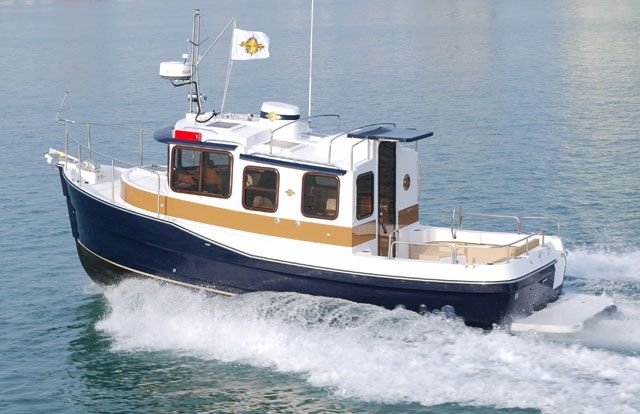
With a round dislodging frame to ensure smooth moving through water and large cabins, the fishing vessel boats are great for long-range cruising. Because of its design, the boat utilizes less horsepower to travel through the water, and that implies less fuel is burned and leaves the ability to cover longer distances.
13. Pontoon Boats: ( Types of Boats )
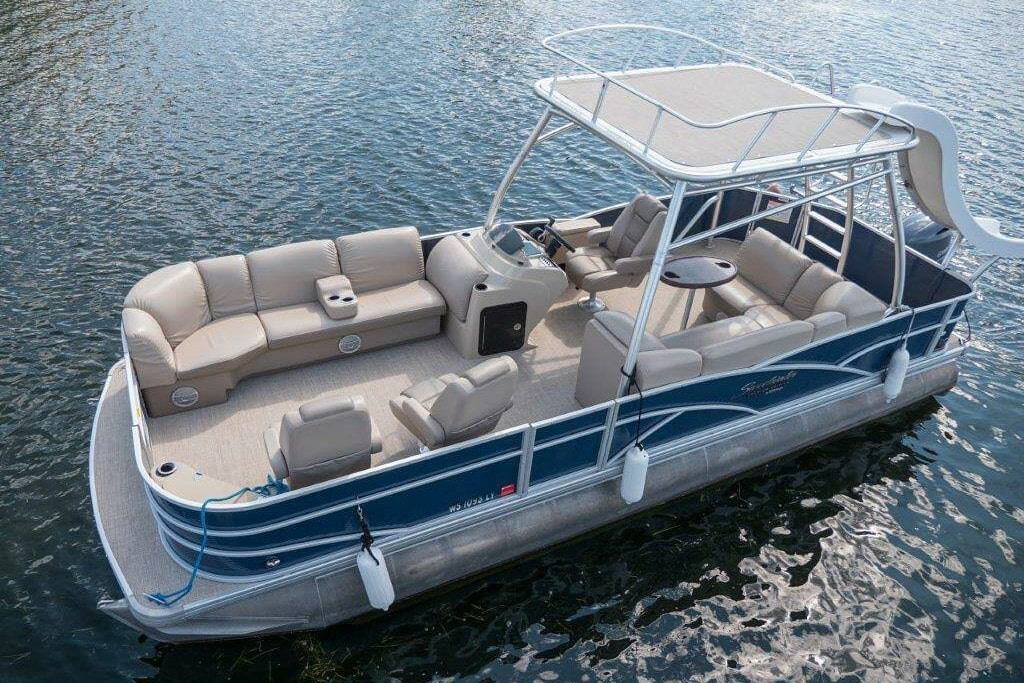
Pontoon boats have a large deck put on top of tubes called pontoons that keep the body above water. These kinds of boats are utilized for the most part for inland waters and waterways of very nearshore drifting.
Due to their Design, Pontoon boats are not made for rapid speed and extremely long travel however maximum delight during short-range relaxing cruises. Recreation exercises, entertaining, and even water sports and fishing are the pontoon boats’ fundamental purposes in not an extraordinary manner. The typical size of most pontoon boats is in the range somewhere in the range of 16 and 30 ft. Contingent upon the seating arrangements, the deck can convey a passenger heap of up to 25 individuals.
14. Sedan Bridge Boats: ( Types of Boats )
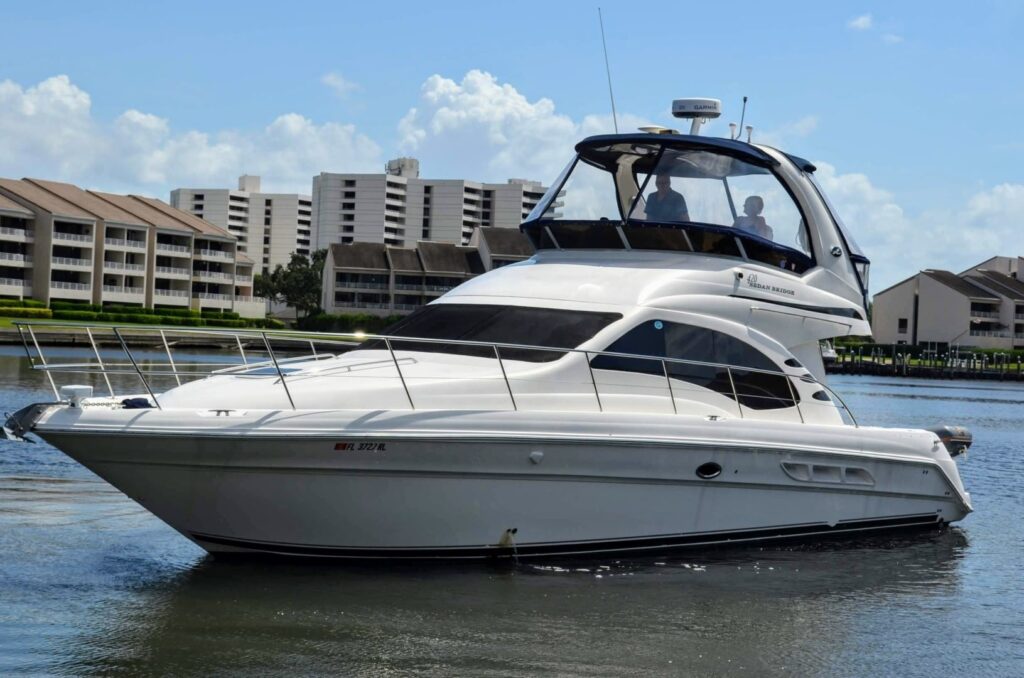
A hybrid vessel between a few types of boats makes sedan bridge boats very popular for long-range cruises and nearshore voyages that require excellent navigation skills. The hull of the boat is to some degree like a yacht and the highlights in general and conveniences. In any case, the actual bridge is stretched out to permit the navigator better visibility or perceivability in any condition.
In view of the elevated place of the extension, sedan bridge boats give the impression of an extremely huge boat. The profundity of the boat’s frame should be deep enough as an offset for the level of the scaffold to guarantee stable development through the water. As a little something extra, it gives the boat more space for facilities underneath to fulfill longer travels with additional individuals.
15. Houseboats: ( Types of Boats )
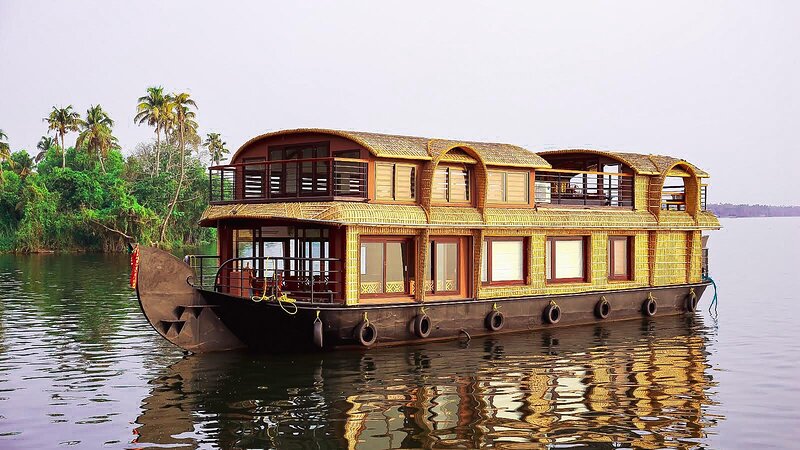
Houseboats are constructed and used to offer similar conditions of residing in a house yet with the additional luxurious shimmer of doing it on the water.
Houseboats, otherwise called float houses, come in different sizes and designs relying upon their utilization. In any case, every one of them has a significant amount of space, have a resting plan, a kitchen, a standard restroom, and, even a lounge area, essentially all that you get in a typical house.
The majority of these boats are mechanized, and that implies they can likewise be utilized for relaxed cruising or in any event, relocating your living area; Some come up short on capacity to move on their own and need the help of one more boat when needed to be moved.
Essential Boat Safety Tips
1. Be Prepared with a Boat Safety Kit
You can’t necessarily in every case foresee a crisis, so be ready for any situation. Your boat safety kit ought to be kept on board regardless of the size of your boat.
2. Bring the Proper Life Jackets
Life jackets accomplish more than simply keep you afloat. Many are intended to turn an unconscious individual face up and try and assist with forestalling hypothermia. A few states likewise expect kids to wear life jackets at all times.
3. Don’t Overload the Boat with People or Equipment
Always follow your boat’s capacity restriction. Over-burdening your boat with travelers or hardware can unbalance your boat and risk your life.
4. Check for Harmful Fumes
Subsequent to refueling your boat, open all the lids and smell fumes. Whenever identified, don’t start the engine. Carbon monoxide can gather in and around your boat and out of the blue knock you or your guests unconscious.
5. Check the Weather Beforehand
Warm, bright days are great for sailing, yet you can’t necessarily in all cases anticipate when a storm will come in. Shifting whirlwinds and choppy water are indications of an approaching storms. Furthermore, regardless of whether it’s a warm spring day, the water could rather reflect winter temperatures. If your boat inverts or you and your travelers get wet, ensure you have a plan to look for help and get dry.
6. Use Common Sense in the Water
Rules on the water aren’t vastly different than rules on the road. It’s essential to utilize sound judgment, for example, remaining alert consistently, operating at a safe speed, and ensuring that passengers or travelers stay securely within the boat’s railings.
7. Follow Proper Docking Procedure
Contingent upon the breeze, the current, and your kind of boat, docking can be a test. As you approach the dock or shore, ensure your guards are on a mission to forestall harm to your craft, diminish your speed and ensure the docking lines are secured. Assuming the breeze is blowing towards the shore, bring the boat about two feet from the dock and the breeze will gently pull it in.
8. Follow Proper Anchoring Procedures
It isn’t sufficient to have the right anchor. To hold the breeze back from dragging your boat, you might have to drop two anchors in a V-formation at the front of the craft to hold it back from drifting.
9. Take a Boating Safety Course
Before you leave the dock, ensure you know the standards and your obligations. There are a few online courses accessible, including a couple of free courses.
Conclusion
Whether you are searching for recreation and unwind cruising or perhaps adrenalin looking for adventurer or even a fishing fan hoping to make the following stride towards turning into an ace, the right kind of boat is out there hanging tight for you, you need to comprehend the expected use prior to picking one.
Content Source: – marineinsight, nationwide
Image Source: – pinterest, paddlingspace, manrule, zppays, bairdmaritime, gradywhite, bassboateurope, pixabay, bigmmarina, boatingmag, getmyboat, yachtworld, greenlakemarina, yachtbroker, tripadvisor
